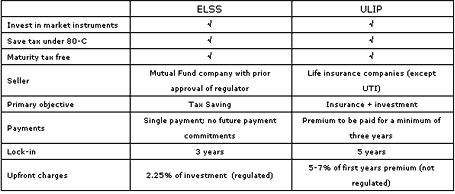 Investmentyogi simplifies equity linked savings schemes for Get Ahead readers and discusses the pros and cons.
Investmentyogi simplifies equity linked savings schemes for Get Ahead readers and discusses the pros and cons.
Equity linked saving schemes (ELSS) have become an important tool for tax saving ever since the finance minister raised the limit of investing in ELSS u/s 80-C from Rs 10,000 to Rs 1 lakh. This also coincided with the stellar performance of the equity market and suddenly people were forced to take note of this newfound tax saving instrument.
~ ELSS is like an equity mutual fund but with a mandatory lock in period of three years. Although most ELSS are diversified in terms of investment style, there are exceptions which are bent towards mid and small cap stocks in their style. Such funds are more aggressive and volatile as compared to normal diversified schemes. So it should be very clear to an investor that investing in ELSS is similar to investing in equity mutual schemes with a benefit of tax saving built in.
~ ELSS vs ULIP

~ Like in any mutual fund scheme, ELSS also gives a choice of growth or dividend option. The growth option will work like a normal FD or a NSC ie it will not give any payouts during your holding period and give you the lump-sum at the end of the period of holding.
In a dividend option the AMC can declare dividends, subject to available surpluses. Although dividends come out of your investments and there is no financial gain per se, it helps considerably by giving you the tax benefit on the whole investment amount and at the same time reducing the lock in period. This particularly helps if you invest in an ELSS just before the declaration of dividend.
Usually the dividend effectively comes to 15-25 per cent of your investment. Assuming dividend declared is 20 per cent of the investment, and an investment of Rs 50,000, you effectively pay only Rs 40,000 (since the dividend of Rs 10,000 is paid to you in about a week's time), and still manage to get the tax benefit on the whole of Rs 50,000. If you are in the tax bracket of 30 per cent, it comes out to a tax saving of Rs 15,000 on an investment of Rs 40,000 (37.5 per cent).
Dividend reinvestment is another option and that has other advantages. In the above case if you invest Rs 50,000 before the dividend date, Rs 10,000 will be reinvested in the same scheme by giving you a tax benefit on Rs 60,000, since Rs 10,000 will also be deemed to be your investment in ELSS. Any future dividends reinvested during the holding period will also be deemed to be fresh investments in ELSS and given tax benefit accordingly.
Remember that dividend reinvested is locked for three years from the date of reinvestment but you also get the tax benefit on that particular date. Assuming that the same amount of dividend is declared for three years (practically it can be more), the effective tax saving comes to almost half of amount invested. The effective tax saving will be much higher if you decide to hold it for longer period (a 100 per cent tax saving in a five-seven year period can not be ruled out).
Ever heard of such a tax saving instrument before?





